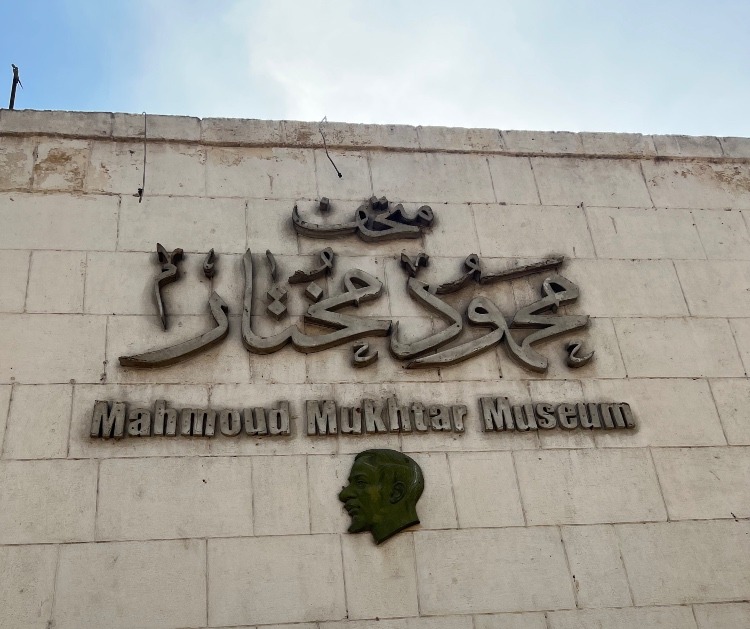Tucked away on the opposite side of the Cairo Opera House, stands the museum of renowned sculptor Mahmoud Mokhtar. Mokhtar’s career can be described as “genius” due to his ability to portray the essence of both ancient and modern Egypt. He holds a significant position in the history of the contemporary Egyptian nation while also being regarded as a forerunner of modern Egyptian art. Mokhtar, who is recognized as the first Egyptian sculptor in more than two millennia, combined Pharaonic imagery with a contemporary European sculptural aesthetic to produce unique works of art that are distinctly nationalist in nature.
Luckily, on Sunday, the museum was empty which allowed us quality time with the article. The Mahmoud Mokhtar museum was so much pleasure to explore thanks to its intricately carved walls and the variety of halls it holds. As soon as we arrived at the museum, we found the Secret Keeper statue looking us in the eyes which looked intimidating, to be honest at first, then we were faced with the head of Saad Zaghlool, who was an Egyptian revolutionary and the leader of Egypt’s nationalist Wafd Party. It’s also worth mentioning that Ramses Wissa Wassef who was an Egyptian Coptic architect and professor of art and architecture at the College of Fine Arts in Cairo, designed the Mahmoud Mokhtar museum to host his sculptures in 1962.
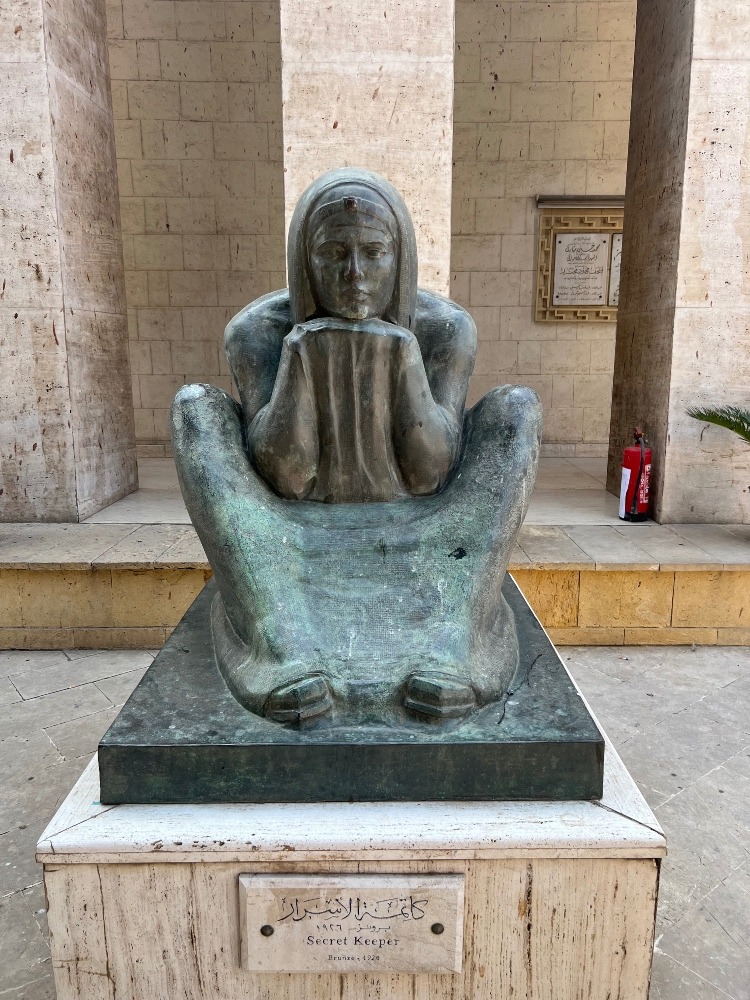
Afterward, we paid a fee of EGP10 for entry and our journey started! Mokhtar’s sculptors were everywhere and what grabbed our attention was the head of Abdel Khaled Tharwat who served as the Prime Minister of Egypt from March 1922 until Nov. 1922, and again between April 1927 and March 1928. The sculpture was made from marble and it absolutely looked fascinating with the way the museum had the lightning set around.
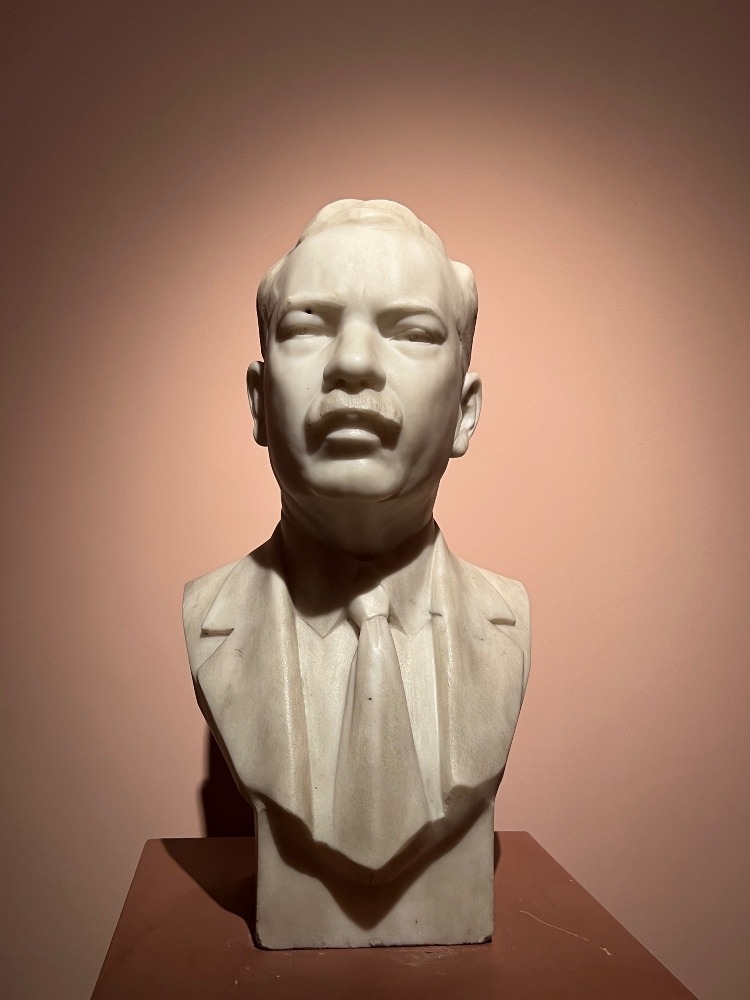
Mokhtar’s Hall of Jar Bearers heavily caught our attention, the hall was filled with profound sculptures. “The Cheese Seller” for example, beautifully portrayed a stone sculpture of a rural woman carrying a cheese bowl. Also, the aesthetic of the sculptures being placed next to each other in such symmetry makes you even more interested in the process that Mokhtar went through to produce such magnificent artwork.
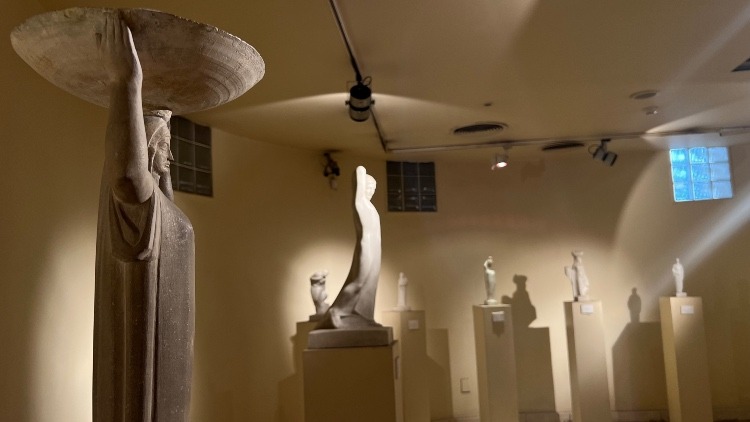
The last part we visited was Mokhtar’s graveyard which was on the lower level of the museum. There wasn’t much artwork in the room, as we would expect, but it really portrayed the significance of his life and career across the region.
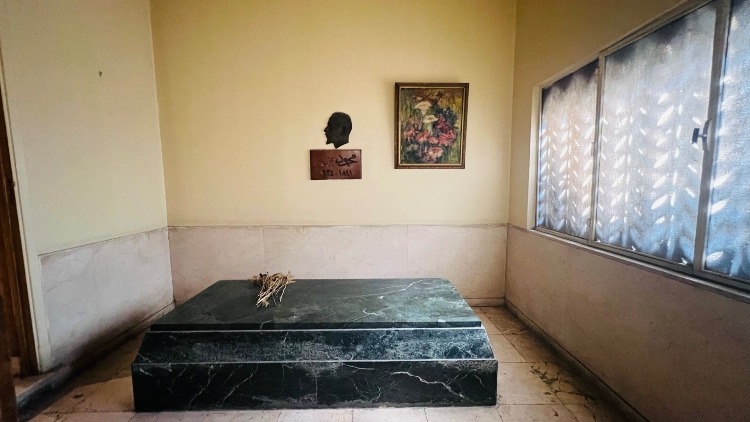
Mokhtar, who passed away in 1934, left behind an impressive body of work in his museum that depicts his magical prowess with granite, basalt, marble, and stone. From our perspective, the museum is both under-appreciated and under-marketed. Last but not least, there wasn’t much direction or information available, so it would be better to find a guide or read some info about Mokhtar before going.


